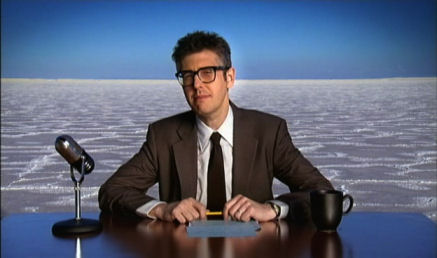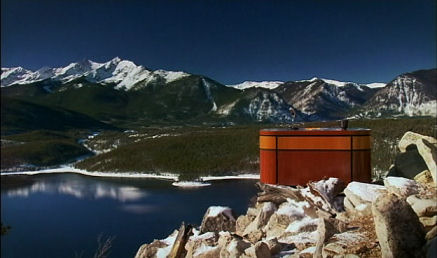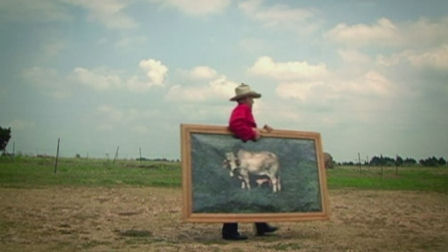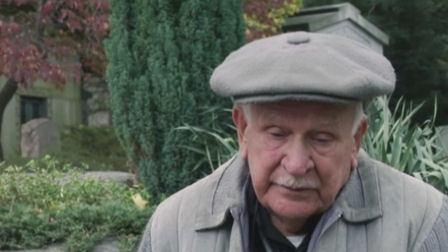Television: This American Life – Showtime
by John Walker on Apr.19, 2007, under Television

I almost don’t have the words.
I feel like if I write this badly, I’ll break it. Like I might break the spell, and it won’t exist any more.
This American Life has been a radio programme broadcast on Chicago Public Radio, and syndicated on public radio stations across America, for a decade. You can hear it here. Each week, as presenter Ira Glass would say, they choose a theme, and bring a variety of stories on that theme. It’s about the intricate details of people’s lives, the specifics that make them them, rather than you. It’s almost unique in not trying to identify with its listeners, but rather simply asks you to be interested in someone else.

A British reference point would be Home Truths, presented by the late, and missed, John Peel. Both programmes shared a gentleness that’s almost impossible to find anywhere else. And neither did this at the expense of honesty. Difficult, painful stories are as at home as amusing or uplifting tales. John Peel died, and, eventually, Radio 4 gave the programme the dignity to let it die with him. Fortunately Ira Glass is alive and well, and so This American Life continues.
Taking radio to television is a process that requires grace and intelligence. Or more often, reinvention. This American Life opts for the first option in an unparalleled fashion. It is radio with pictures. Really beautiful pictures.

Mimicking the radio programme’s format, an episode begins with a short interview or report, and then an introduction from Glass declaring the loose theme for that edition. On the television programme, he sits at a simple wooden desk with a microphone, perhaps on the side of a mountain, in the middle of the desert, or in an underground carpark. The Python reference seems quite deliberate, but simultaneously explains Glass’s role in the proceedings – a man separate from the events.
Perhaps a great testament to the programme is that it took me four episodes to realise that it was only half an hour long. The deliberate and composed pace provides so much precise detail that it feels as though it must be closer to an hour. To fit in three stories, each leaving you feeling intimate with the subjects, in such a short time is astonishing.

So far televised stories have included the farmer whose tame pet bull, Chance (so tame that it became a novelty, appearing on Letterman and the Superbowl half-time show), was dying, and was cloned as part of a Texas university research project. Or the 14 year old junior high student who has rationalised the futility of love, and sworn to never succumb to its “barbarian” ways. There was the politician who never lies, and the man who seeks bearded men in Utah to pose for photographs for his paintings of Biblical scenes. There was the photographer who stood and photographed while a woman was swept out to sea and drowned. Last week’s stunning edition dedicated an entire episode to the documentary a man in his twenties has made about his alcoholic parents, one a former pop star and now step-dad, the other his broken and conflicted mother.

What makes it so special is the respect with which the subjects are treated. It’s not naive or unquestioning, but rather documentary that asks the questions that are relevant, but knows when to be quiet and listen. Talking to Joe, the 14 year old who has sworn off love, TAL demonstrates a degree of respect that I have never seen television show a teenager. It doesn’t patronise him, or suggest that he doesn’t know what he’s talking about. It shows his mother, Naomi, exasperated that she thinks he doesn’t know what he’s talking about. But it gives Joe a place to explain his thinking. When people are in ridiculous situations, Glass asks astonished questions. It’s an honest reaction, and it brings out more truth from the subject.
And the pictures. Perhaps driven by the fear of translating something they love to a medium they know is capable of brutally destroying radio, every shot is so beautifully constructed. The colour, the contrast, the juxtaposition, all breathtaking. You could pause it almost anywhere, print it out, and frame it. Ingeniously, the editing is frequently such that a person begins speaking long before you see them on screen. This degree of separation maintains the atmosphere of radio, where your imagination is still given room for creating images, despite those already present on screen.
Add in the superb music selection, and Ira Glass’s wonderful voice.
It’s deeply emotional, deeply intimate. It’s never naive, but prepared to listen. It maintains the profundity of the radio series, but is deservedly executed on a different medium. This is how good television can be.
April 20th, 2007 on 08:00
Onion opinion.
April 20th, 2007 on 09:25
Weak. God forbid anyone be proud of being intelligent.
Typical Onion misdirected snobbery.
There are lots of ways to criticise TAL. They missed all of them.
April 21st, 2007 on 11:19
That looks really interesting. I’ll have to, uhm, look it up.